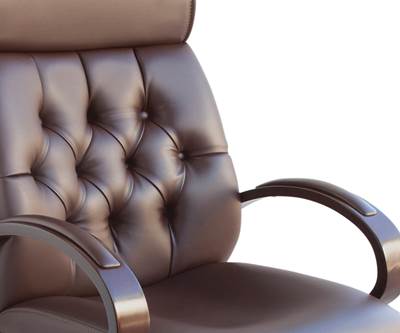Video: HP on Additive Manufacturing for Production
HP’s Timothy Weber discusses VW’s plans for making metal parts via AM and the way forward to implementing additive as a production process.
Last year, HP introduced its Metal Jet system for metal part production via additive manufacturing (AM). I recently spoke with Timothy Weber, Ph.D., HP’s global head of 3D metals, about automaker Volkswagen’s plans for part production using this system.
Transcript
Peter Zelinski, Additive Manufacturing
HP’s Metal Jet is a metal 3D printing system for production. Volkswagen is an early user. HP’s Tim Weber recently spoke to me about what it takes to realize the promise of additive manufacturing for production.
Timothy Weber, HP
We started working with VW. They're a great partner because they're trying to figure out, you know, where is the world going when it comes to manufacturing? One of the things they're looking at is how do you start to consolidate parts? They showed a recent part which is previously 16 parts that you can consolidate into one. It was huge weight savings, like 50 percent of the weight basically comes out. If you can compete on economics, now you start taking rivets, welds and other things out and simplify the process. You simplify the yield.
Peter Zelinski
VW has intentions to use this for production, for an electric vehicle, for a newer model car. It seems to me that a challenge of additive manufacturing in production is that a major manufacturer like VW is already invested in conventional production processes for its established products. Additive is finding its way in because there's a new product. It's a chance to take a clean sheet and it's a chance to try to find advantages of an entirely new way to produce. I wonder if you agree that the way in for additive production is going to be new products and fresh starts with new products coming to market.
Timothy Weber
If you have big capital investments like they have for building, say, internal combustion engines, replacing that is a pretty tall bar, right? Even if it's maybe more cost effective. If you start over with a clean sheet of paper off to production, that clearly represents an opportunity. If you look at how most of the equipment is put together, there are a lot of different parts providers. If you find a way to take what was previously eight cheap metal parts and replace it with one 3D-printed part, you have a new supply chain. I see evolutionary improvements to how things are assembled today.
One of the things that we've found is that because there are opportunities to do things differently, like consolidating parts, it almost always requires a top-down mandate where the management structure, the chief of engineering, the CEO, the chief production officer says, “I want an exercise to actually go through the parts with this set of design guidelines and look for where there are opportunities to improve and drive economics to a better point.” If I've been doing this for 20 years—building a certain part a certain way—I'm probably going to continue to do that unless my boss says, “No, I want you to go through this exercise. Here's the new set of design rules. Figure out what you can do.” That's how we've seen a lot of acceleration, at least within HP, for how we drive that.
Peter Zelinski
It sounds like organizationally you're saying that culture has to be the first step. There has to be top-down adoption of additive because it is so transformational that a deliberate culture shift is necessary for it to find its opportunities.
Timothy Weber
That's exactly what I'm saying.
Related Content
Additive Manufacturing Is Subtractive, Too: How CNC Machining Integrates With AM (Includes Video)
For Keselowski Advanced Manufacturing, succeeding with laser powder bed fusion as a production process means developing a machine shop that is responsive to, and moves at the pacing of, metal 3D printing.
Read MoreVulcanForms Is Forging a New Model for Large-Scale Production (and It's More Than 3D Printing)
The MIT spinout leverages proprietary high-power laser powder bed fusion alongside machining in the context of digitized, cost-effective and “maniacally focused” production.
Read MoreHow Siemens Energy Applies Additive Manufacturing for Power Generation and More
At an applications center in Orlando, Florida, a small team of AM specialists is spanning industries by 3D printing parts to support both Siemens Energy power generation systems and external customers.
Read MoreAluminum Gets Its Own Additive Manufacturing Process
Alloy Enterprises’ selective diffusion bonding process is specifically designed for high throughput production of aluminum parts, enabling additive manufacturing to compete with casting.
Read MoreRead Next
What Your CEO Needs to Know About Additive Manufacturing
Additive manufacturing promises to affect far more than manufacturing alone. When evaluating AM, the perspective needed is the view that sees the impacts all across the enterprise.
Read More3D Printing Brings Sustainability, Accessibility to Glass Manufacturing
Australian startup Maple Glass Printing has developed a process for extruding glass into artwork, lab implements and architectural elements. Along the way, the company has also found more efficient ways of recycling this material.
Read MoreAt General Atomics, Do Unmanned Aerial Systems Reveal the Future of Aircraft Manufacturing?
The maker of the Predator and SkyGuardian remote aircraft can implement additive manufacturing more rapidly and widely than the makers of other types of planes. The role of 3D printing in current and future UAS components hints at how far AM can go to save cost and time in aircraft production and design.
Read More


















